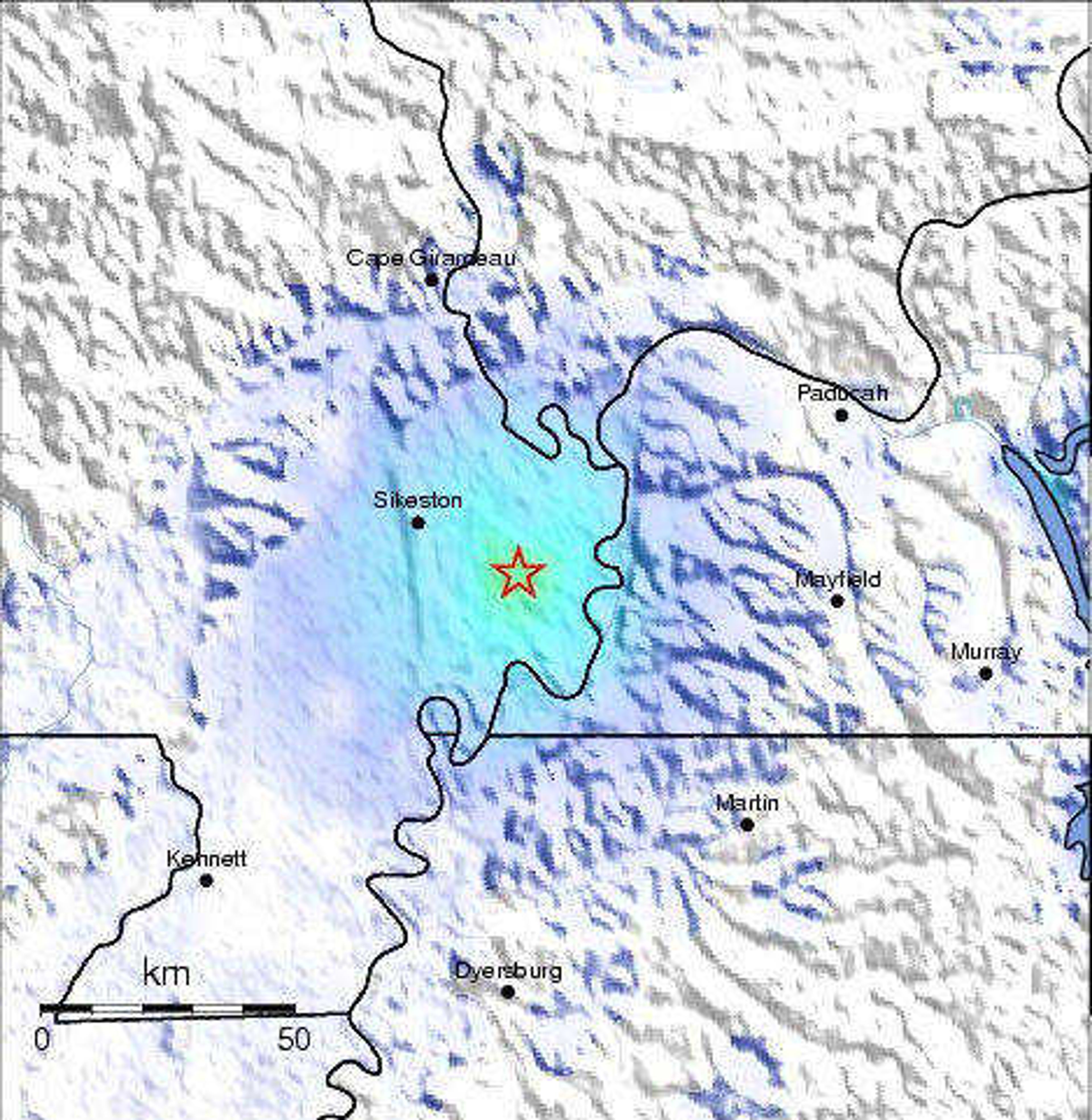EAST PRAIRIE, Mo. -- A 3.7-magnitude earthquake occurred at 1:37 p.m. near East Prairie Tuesday, followed by a smaller 1.6-magnitude quake shortly before 6 p.m.
But a geologist said it caused little to no damage in the area.
The Center for Earthquake Research and Information in Memphis, Tenn., said that in addition to East Prairie, the most reports it received about the 3.7-magnitude earthquake were from people in the Missouri communities of Sikeston, Charleston and New Madrid and Wycliffe, Ky. Four people reported feeling the earthquake in Cape Girardeau.
"Generally most people don't start feeling earthquakes until the 2.5-magnitude," said Gary Patterson, a geologist with the Center for Earthquake and Research Information in Memphis, Tenn. "But you won't start seeing any damage until it reaches 4-magnitude and even then it won't do much more than maybe knocking over some things."
Patterson said the quakes likely were not caused by the recent earthquakes in Chile and Haiti.
The first quake was felt as far north as Alton, Ill., and St. Peters, Mo., according to a Missouri Department of Natural Resources news release.
"Given its relatively shallow depth of about 3.6 miles, and its magnitude, it's no surprise that it was felt 200 kilometers away," said Joe Gillman, the Missouri Department of Natural Resources' Geology and Land Survey Director and the state's geologist. "It wouldn't be surprising for it to be felt even further away."
More than 200 small quakes occur within the New Madrid seismic zone each year.
Connect with the Southeast Missourian Newsroom:
For corrections to this story or other insights for the editor, click here. To submit a letter to the editor, click here. To learn about the Southeast Missourian’s AI Policy, click here.







